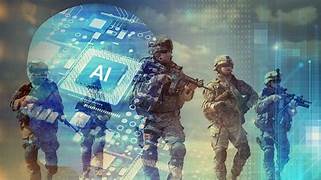How Does Technology Influence the Dynamics of Modern Warfare?
Modern warfare has undergone a significant transformation, shaped by rapid technological advancements that have redefined the strategies, tools, and implications of conflict. From autonomous drones to cyberattacks, technology now plays a central role in determining the outcomes of military engagements and reshaping global power dynamics. As nations invest heavily in research and development to maintain a technological edge, the nature of warfare continues to evolve, blending traditional combat with emerging, high-tech methods.
This article explores how technology influences modern warfare, examining key areas such as weaponry, surveillance, cyber capabilities, artificial intelligence, and the ethical challenges these advancements bring.
1. Evolution of Weaponry: Precision and Lethality
The development of advanced weaponry has revolutionized the way wars are fought. Modern weapons are designed to maximize precision, minimize collateral damage, and achieve strategic objectives with unparalleled efficiency.
Smart Weapons
Smart weapons, such as guided missiles and precision-guided munitions, use GPS and laser guidance systems to strike targets with pinpoint accuracy. This precision reduces unintended casualties and allows for highly targeted operations, as seen in conflicts in the Middle East.
Autonomous Drones
Unmanned Aerial Vehicles (UAVs), commonly known as drones, have become a staple of modern warfare. Armed drones can deliver airstrikes without risking human pilots, while reconnaissance drones provide real-time intelligence on enemy movements. The use of drones by the U.S. military and other nations has demonstrated their effectiveness in counterterrorism and surveillance missions.
Hypersonic Weapons
Hypersonic missiles, capable of traveling at speeds exceeding Mach 5, represent the next frontier in military technology. These weapons are designed to evade traditional missile defense systems, providing a significant advantage to nations that deploy them.
2. Cyber Warfare: The Invisible Battlefield
The digital revolution has introduced cyberspace as a critical domain of warfare. Cyberattacks are now a primary tool for disrupting enemy infrastructure, stealing sensitive information, and sowing confusion.
Hacking and Espionage
Nations and non-state actors use hacking to infiltrate government systems, military networks, and private organizations. Cyberattacks, such as the 2017 WannaCry ransomware attack and the SolarWinds breach, demonstrate the vulnerabilities of even the most secure systems.
Disinformation Campaigns
The weaponization of information has become a powerful tool in modern conflict. Social media platforms and digital media are used to spread propaganda, manipulate public opinion, and undermine trust in institutions. Russia’s alleged interference in various elections illustrates the strategic use of disinformation.
Critical Infrastructure Attacks
Cyberattacks targeting critical infrastructure, such as power grids, water supplies, and transportation networks, can cause widespread disruption. Such tactics are increasingly seen as a way to cripple an opponent without direct physical confrontation.
3. Artificial Intelligence (AI) and Automation
AI and automation are transforming military operations, enabling faster decision-making and reducing the reliance on human intervention in dangerous situations.
AI-Driven Warfare
AI-powered systems analyze vast amounts of data to predict enemy actions, identify vulnerabilities, and suggest optimal strategies. For instance, predictive analytics can help commanders anticipate enemy movements and respond proactively.
Autonomous Systems
Autonomous vehicles, including drones, tanks, and submarines, operate with minimal human input. These systems can execute missions in hostile environments, such as bomb disposal or reconnaissance in contested areas.
AI in Command and Control
AI improves battlefield coordination by integrating data from multiple sources, such as satellite imagery, ground sensors, and intelligence reports. This enables commanders to make informed decisions in real-time.
4. Surveillance and Reconnaissance
Advanced surveillance technologies have enhanced situational awareness, providing a critical advantage in modern warfare.
Satellite and Aerial Reconnaissance
High-resolution satellites and drones equipped with cameras, sensors, and radar systems offer detailed intelligence about enemy positions and activities. Nations rely on these tools to monitor borders, track military movements, and plan operations.
Facial Recognition and Biometrics
Facial recognition software and biometric systems help identify individuals of interest, track movements, and secure military installations. These technologies are particularly effective in counterterrorism operations.
Electronic Warfare
Electronic warfare technologies disrupt enemy communications, radar, and navigation systems. By jamming signals and intercepting communications, militaries can gain a tactical advantage on the battlefield.
5. Robotics and Exoskeletons
The integration of robotics and wearable technologies has redefined the physical capabilities of soldiers and the deployment of unmanned systems.
Combat Robots
Robots are increasingly used in combat roles, ranging from unmanned ground vehicles (UGVs) that clear mines to armed robots capable of engaging targets. These systems reduce the risk to human soldiers while enhancing combat efficiency.
Exoskeletons
Wearable exoskeletons augment the physical abilities of soldiers, enabling them to carry heavy loads, move faster, and endure harsh conditions. These technologies are in development to improve soldier endurance and performance.
6. Ethics and Challenges of Technological Warfare
The growing reliance on technology in warfare raises significant ethical and practical concerns.
Autonomous Weapons and Accountability
The use of autonomous weapons, such as drones and robots, challenges traditional notions of accountability. If a machine causes unintended harm, determining responsibility becomes complex.
Cybersecurity Vulnerabilities
As militaries become more dependent on technology, the risk of cyberattacks grows. A successful breach of a critical system could have devastating consequences.
AI Bias and Decision-Making
AI systems are only as good as the data they are trained on. Biased or incomplete data can lead to flawed decisions, potentially causing harm or escalating conflicts.
Arms Race
The rapid development of military technology fuels an arms race, with nations striving to outpace each other. This competition increases the risk of destabilization and unintended conflicts.
7. Implications for Global Power Dynamics
Technological advancements in warfare have profound implications for global power structures, alliances, and security.
Shifting Power Balances
Nations with advanced military technologies, such as the United States, China, and Russia, wield significant influence on the global stage. Emerging powers investing in technology, like India and Israel, are also reshaping the balance of power.
Asymmetric Warfare
Non-state actors and smaller nations can use technology to level the playing field against more powerful adversaries. Cyberattacks, improvised explosive devices (IEDs), and drones are examples of how technology enables asymmetric warfare.
Deterrence and Escalation
Technological superiority can act as a deterrent, preventing conflicts by demonstrating overwhelming capabilities. However, it also raises the stakes of escalation, particularly in cyber and nuclear domains.
8. Future Trends in Technological Warfare
The future of warfare will likely be defined by the continued integration of emerging technologies.
Quantum Computing
Quantum computers promise to revolutionize encryption and decryption, potentially rendering current cybersecurity measures obsolete. This has significant implications for communication and intelligence in warfare.
Biotechnology
Advances in biotechnology could lead to the development of bioengineered soldiers, enhanced with genetic modifications or nanotechnology, raising ethical and strategic questions.
Space Militarization
The increasing militarization of space, including anti-satellite weapons and space-based surveillance, adds a new dimension to global conflict.
Conclusion
Technology has fundamentally transformed the dynamics of modern warfare, introducing new opportunities and challenges. From precision weaponry and AI-driven systems to cyber warfare and robotics, the tools of conflict are evolving at an unprecedented pace. While these advancements offer significant advantages, they also raise ethical concerns and create vulnerabilities that must be addressed.
The impact of technology on warfare underscores the need for international cooperation, robust regulatory frameworks, and a commitment to ethical principles. By leveraging technology responsibly, humanity can strive to reduce the destructiveness of conflicts and build a more secure and stable world.


